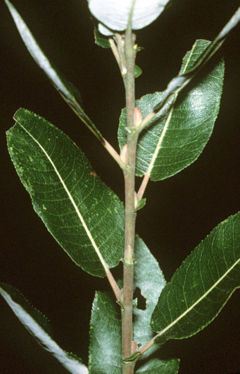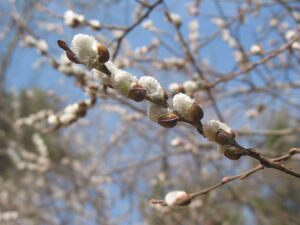Salix discolor
| Salix discolor secure Fossil range: {{{fossil_range}}}
| ||||||||||||||||||||||||||||||||||||||||||||||||||||||||||||||||||
|---|---|---|---|---|---|---|---|---|---|---|---|---|---|---|---|---|---|---|---|---|---|---|---|---|---|---|---|---|---|---|---|---|---|---|---|---|---|---|---|---|---|---|---|---|---|---|---|---|---|---|---|---|---|---|---|---|---|---|---|---|---|---|---|---|---|---|
 Shoot with leaves | ||||||||||||||||||||||||||||||||||||||||||||||||||||||||||||||||||
| Plant Info | ||||||||||||||||||||||||||||||||||||||||||||||||||||||||||||||||||
| ||||||||||||||||||||||||||||||||||||||||||||||||||||||||||||||||||
| Scientific classification | ||||||||||||||||||||||||||||||||||||||||||||||||||||||||||||||||||
| ||||||||||||||||||||||||||||||||||||||||||||||||||||||||||||||||||
| [[{{{diversity_link}}}|Diversity]] | ||||||||||||||||||||||||||||||||||||||||||||||||||||||||||||||||||
| {{{diversity}}} | ||||||||||||||||||||||||||||||||||||||||||||||||||||||||||||||||||
| Binomial name | ||||||||||||||||||||||||||||||||||||||||||||||||||||||||||||||||||
| Salix discolor Muhl. | ||||||||||||||||||||||||||||||||||||||||||||||||||||||||||||||||||
| Trinomial name | ||||||||||||||||||||||||||||||||||||||||||||||||||||||||||||||||||
| {{{trinomial}}} | ||||||||||||||||||||||||||||||||||||||||||||||||||||||||||||||||||
| Type Species | ||||||||||||||||||||||||||||||||||||||||||||||||||||||||||||||||||
| {{{type_species}}} | ||||||||||||||||||||||||||||||||||||||||||||||||||||||||||||||||||
| {{{subdivision_ranks}}} | ||||||||||||||||||||||||||||||||||||||||||||||||||||||||||||||||||
| [[Image:{{{range_map}}}|{{{range_map_width}}}|]] | ||||||||||||||||||||||||||||||||||||||||||||||||||||||||||||||||||
| Synonyms | ||||||||||||||||||||||||||||||||||||||||||||||||||||||||||||||||||
| {{{synonyms}}} |
Salix discolor (American Pussy Willow[1]) is a species of willow native to North America, one of two species commonly called Pussy Willow.

It is native to the northern forests and wetlands of Canada (British Columbia east to Newfoundland) and the northeastern contiguous United States (Idaho south to Wyoming, and east to Maine and Maryland).[1][2][3]
It is a weak-wooded deciduous shrub or small tree growing to 6 m tall, with brown shoots. The leaves are oval, 3-14 cm long and 1-3.5 cm broad, green above and downy grey-white beneath. The flowers are soft silky silvery catkins, borne in early spring before the new leaves appear, with the male and female catkins on different plants (dioecious); the male catkins mature yellow at pollen release. The fruit is a small capsule 7-12 mm long containing numerous minute seeds embedded in cottony down.[2][3]
Cultivation and uses
Like other willows, it contains salicin, and was used by Native Americans as a painkiller.[3]
As with the closely related Salix caprea (European Pussy Willow), it is also often grown for cut flowers. See Pussy Willow for further cultural information and uses.
References
- ↑ 1.0 1.1 Germplasm Resources Information Network: Salix discolor
- ↑ 2.0 2.1 Plants of British Columbia: Salix discolor
- ↑ 3.0 3.1 3.2 Borealforests: Salix discolor